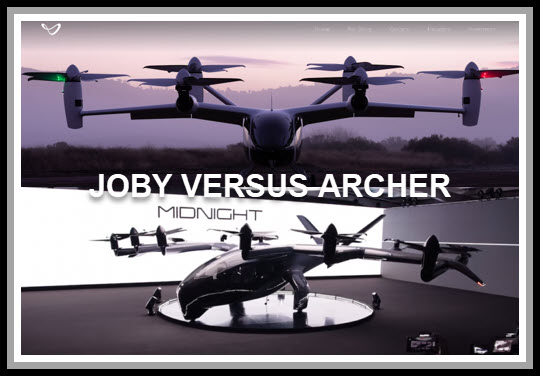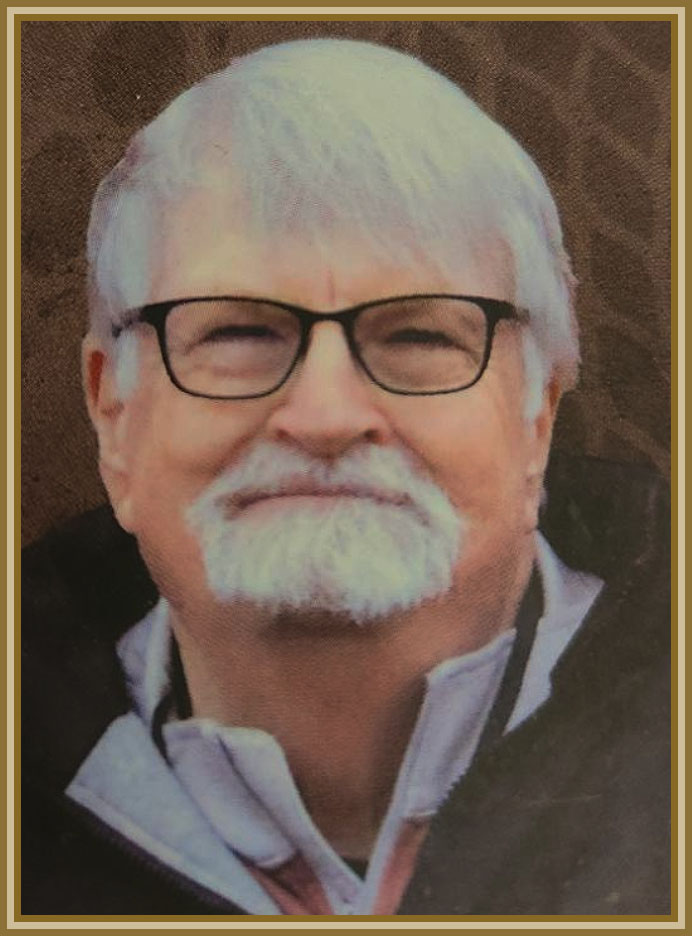There are significant advantages of being first to be certificated and first to market. There are disadvantages when the leaders are heading into the unknown maze known as CERTIFICATION. Below is an excellent article assessing the progress of the two apparent leaders in the EVTOL race–Archer Aviation and Joby Aviation. The author differentiates the competitors’ strategies to be certificated and to open up sales of airworthy aircraft.

What differentiates the two in certification strategies?
ARCHER: 80% of its vehicle’s major components and subsystems through SUPPLIERS WITH A PROVEN TRACK RECORD OF FAA CERTIFICATION. According to Microsoft AI:
- Stellantis Partnership: In January 2023, Archer announced a partnership with Stellantis, A MULTINATIONAL AUTOMOBILE MANUFACTURER. Stellantis committed to providing up to $150 million in equity capital to support Archer’s growth and collaborate on the development and production of Archer’s eVTOL aircraft for urban air mobility.
- Strategic Suppliers: Archer’s strategic approach to aircraft development and certification involves leveraging globally recognized suppliers. These include:
- HONEYWELL
- GARMIN
- SAFRAN
These suppliers contribute key aircraft components used throughout Archer’s eVTOL aircraft, ensuring safety, certification, and manufacturing excellence.
JOBY: is heading on a path of VERTICAL INTEGRATION and largely developing its components and systems IN-HOUSE. The experts quoted see this as a risk because 1st Tier suppliers with past FAA certification experience are likely to receive faster approvals on that history (some may already been part of an approved TC or STC). That view is tempered by another quote about Joby’s “IMPRESSIVE ACHIEVEMENTS building and FLIGHT-TESTING FULL-SCALE PROTOTYPES”
What differentiates the two in its first to market strategies?
The experts give the nod to the ARCHER approach because use of suppliers known to the FAA will likely reduce delays. One of their opinions of JOBY progress- “doubts its vertically integrated model will meaningfully change its time to market.”
What needs to be noted is that the eVTOL technology makes the FAA assess novel operations. A spectrum of flight configurations, power supplies, noise signatures, maintenance regimes and many other factors unknown to the FAA. Passage through the FAA certification maze poses many risks, for example some new test may be required of the applicants. As the FAA has stated:
When tailoring existing rules to a new concept, the FAA determines the certification requirements for the eVTOL’s design, production, airworthiness, and operation. Some certifications could require the FAA to issue special conditions or additional airworthiness criteria, depending on the type of project. We use the same data-driven approach when evaluating these complex systems that has created the safest aviation system in the world.
Operator Certification & Framework
Many of these new aircraft take off in helicopter mode, transition into airplane mode for flying, and then transition back to helicopter mode for landing.
In June 2023, we issued a proposed rule for training and certifying pilots.
In JULY 2023, THE FAA ISSUED A FINAL RULE that updates the air carrier definition to add “powered-lift” operations to the regulations covering other commercial operations, such as airlines, charters and air tours.
In August 2022, the FAA met its first milestone on time for rules (Special Federal Aviation Regulations) that will govern these operations. Several manufacturers have publicly said they anticipate no delays in certification from this approach.
For example, Joby experienced an accident in its testing and the ANALYSIS included lessons for future certification steps.
JOBY’s CEO pointed out that his team’s strategy “enabled us to build a dramatically better-performing aircraft that is quieter, faster and, most importantly, safer aircraft.”
These technological disruptors, first in line, are demonstrating a way for the next wave of eVTOL TC applicants to learn from their successes. Much, not all of the TC process is in the public record. There are other applicants seeking certification from other Certification Authorities; though EASA has slightly different criteria, their effort to harmonize should allow for useful comparisons. The CAAC actions on its (i.e. owned by the PRC government) may not be as useful or available.

+++++++++++++++++
Vertical Integration Marks Key Split Between Joby And Archer
Ben Goldstein April 02, 2024

Credit: Joby Aviation
In many ways, Archer Aviation and Joby Aviation are highly similar startups. The two front-runners in the nascent U.S. air taxi market are both developing piloted, four-passenger electric vertical-takeoff-and-landing vehicles with the goal of launching commercial service next year.
Both companies plan to start by offering airport shuttles in partnership with major airlines, and both are manufacturing their aircraft in partnership with global automotive companies.
- JOBY IS DEVELOPING PARTS IN-HOUSE FOR OPTIMIZATION
- ARCHER RELIES ON PROVEN SUPPLIERS TO LOWER COSTS AND RISK

But when it comes to their specific manufacturing strategies, the two companies have staked out sharply different paths: JOBY is VERTICALLY INTEGRATED and largely develops its components and systems IN-HOUSE, while ARCHER is pursuing a more traditional model by relying on a roster of TIER 1 LEGACY AEROSPACE SUPPLIERS[1].
Both strategies come with trade-offs. Developing components in-house allows JOBY to optimize for its specific aircraft and improve visibility into the integration process, giving it a higher-performing vehicle at market entry. ARCHER’s strategy of relying on legacy aerospace suppliers creates a leaner business model with lower capital investment costs—and, all else being equal, a lower certification risk that it says can translate to a faster path to market.
That difference in strategy is evident in many layers of the two companies’ aircraft. While ARCHER is using more commonly produced cylindrical battery cells, JOBY is relying on pouch cells that are more novel and likely harder to certify [STET][2]. Similarly, while JOBY is using additive manufacturing and composites to build its vehicle, ARCHER is sticking to traditional aerospace materials that it expects regulators will greenlight more quickly.
This divergence in supply chain strategy could prove to be the decisive difference between these two neck-and-neck startups.

ARCHER FOUNDER AND CEO ADAM GOLDSTEIN tells Aviation Week that the company’s supply chain strategy was conceived with the goal of getting to market as quickly as possible with minimal capital investment and certification risk—although not necessarily the best-performing first-generation aircraft.
“Our strategy is to create the most streamlined path to market, starting with sourcing 80% of our vehicle’s major components and subsystems through suppliers with a proven track record of FAA certification,” Goldstein says. “This isn’t a flashy approach; it’s efficient and pragmatic so that our commercialization timeline can rapidly advance with less risk.”
Mark Moore, the Uber Elevate co-founder who pioneered distributed electric propulsion technology at NASA and more recently founded quiet electric propulsion startup Whisper Aero, generally agrees with Goldstein’s assessment of the challenges of vertical integration.
“From my interactions with the specific FAA officials, there is a prior relationship of trust that exists with companies that have a proven track record as aerospace suppliers of FAA-approved parts,” Moore says. “It takes time for a new supplier to have this kind of relationship with the FAA, which makes sense to me because that’s true for how I work with our suppliers as well. It is certainly more challenging for Joby to be vertically integrated and provide most of their components, from a certification perspective.”
JOBY, however, insists that its vertically integrated model gives it a greater ability to optimize each component specifically for its electric vertical-takeoff-and-landing (eVTOL) aircraft, which will have superior range and speed compared with Archer’s Midnight air taxi.

JoeBen Bevirt, Joby founder and CEO, points to technology companies such as Tesla and SpaceX as examples of the benefits of vertical integration, which he says allows them to manufacture high-performing, state-of-the-art systems while avoiding some of the headaches associated with relying on a web of suppliers.
“When you’re building hardware, there is no substitute to being vertically integrated with the rate of progress that you’re able to deliver and the quality of the products that you’re able to create,” Bevirt tells Aviation Week. Being vertically integrated has “enabled us to build a dramatically better-performing aircraft that is quieter, faster and, most importantly, safer. When your engineers are steeped in the design, manufacturing and testing of the components, you get better, safer and more reliable designs.”
Joby also says its model will make it easier to integrate the various aircraft systems, avoiding the need for late-stage redesigns that can arise during the integration process.
“When you look at a traditional fly-by-wire aircraft that is made with pieces that are cobbled together from different suppliers, the software stacks are different, the hardware stacks are different, and you’re not going to deliver the performance and the integration that we’ve been able to achieve,” Bevirt says. “We all see the inverse of that in a bunch of different aviation companies today that used to be vertically integrated, and they let pieces of the supply chain go. Now that’s causing them significant heartache.”
While most industry-watchers agree that Archer’s strategy offers a lower-risk path to type certification, many also see merits in Joby’s approach, especially given its impressive achievements building and flight-testing full-scale prototypes.
“Joby does have the advantage of having more optimal components that are uniquely designed for the exact application, with tight design coupling to all the internal lessons learned across development,” Moore says. “Like everything in aerospace, it’s a trade-off—and Joby decided to take the more difficult and expensive path that gives them the most control but potentially also more profits.”
Sergio Cecutta, partner and president at SMG Consulting, says Joby’s strategy might have “gone a bit too far” in terms of vertical integration. But given the company’s testing and certification progress, he doubts its vertically integrated model will meaningfully change its time to market.
“I think they have already prepared and put all the items into place to make sure the added effort of vertical integration doesn’t impact their schedule,” Cecutta says.
Which strategy will prove the most efficient and profitable path to type certification and commercialization remains to be seen. But given the high-stakes trade-offs involved, it may be reasonable to expect that the two sharply different approaches to supply chain and production could translate into vastly different commercial prospects for Joby and Archer in the years to come.
Based in Boston, Ben covers advanced air mobility and is managing editor of Aviation Week Network’s AAM Report.
+++++++++++++++++++++++++
[1] Car manufacturer Stellantis to build electric aircraft with Archer Aviation
[2] As verbs the difference between certify and certificate is that certify is to attest to as the truth or meeting a standard while certificate is to supply with a certificate, especially following certification.






